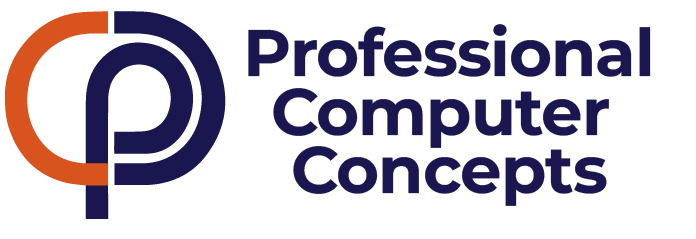Looking for ways to harness the power of digital technology for seamless collaboration and information sharing in your team? Consider using SharePoint, a powerful virtual workspace developed by Microsoft. With SharePoint, teams can easily store, manage, and share important files, documents, and data with colleagues, regardless of their location. It’s important to note that SharePoint is not the same as OneDrive, although they do have some similarities. In this blog, we explore the unique benefits and limitations of SharePoint, as well as some common applications of this versatile digital technology in various industries and functions. Whether you’re aiming to optimize your workflows, manage projects efficiently, or enhance communication with your team members, SharePoint can help you achieve your goals.
What is SharePoint?
SharePoint is a digital technology that is designed to facilitate collaboration and information sharing within organizations. It is a web-based platform that provides a centralized location for storing, organizing, and sharing various types of digital content, such as documents, lists, calendars, and workflows, among others. As a cloud solution SharePoint can be accessed from anywhere with an internet connection.
SharePoint can be used as a content management system, a project management tool, or an intranet portal, among other things. It allows users to create, manage, and share content and collaborate with others in real-time, whether they are in the same office or working remotely.

Are SharePoint and OneDrive the same thing?
SharePoint and OneDrive are two distinct digital technology products, designed to transform the way individuals and organizations collaborate and share information. While they share some similarities, they are not the same thing.
OneDrive is an excellent cloud-based storage solution that allows users to access their personal files seamlessly from anywhere and at any time, making it an ideal choice for those who need a simple and reliable way to store and share their files securely.
In contrast, SharePoint offers a comprehensive platform for teams to collaborate on projects and documents. With its advanced features such as document management, team collaboration, version control, and workflow automation, SharePoint takes collaboration to the next level, making it perfect for organizations that require a centralized hub to manage their projects and collaborate in real-time.
Powering Productivity: Five Common Uses for SharePoint
Collaboration Made Easy
SharePoint provides a centralized hub where team members can work together on projects and documents in real-time, regardless of their location. With its advanced communication and file sharing features, SharePoint makes it easy for teams to share information and work collaboratively, leading to increased productivity and efficiency.
Efficient Document Management
SharePoint offers advanced document management features such as version control, metadata, and document search capabilities. This makes it easier to organize and find documents, leading to increased efficiency and productivity.
Streamline Workflows and Improve Efficiency
SharePoint offers advanced workflow automation capabilities that enable organizations to automate routine tasks, approvals, and notifications. This saves time and effort, allowing team members to focus on more critical tasks.
Leverage Data to Make Informed Decisions
SharePoint provides advanced business intelligence tools that enable organizations to analyze data, create reports, and make informed decisions. SharePoint’s business intelligence capabilities help organizations to identify trends, spot opportunities, and mitigate risks.
Customization
SharePoint is highly customizable, allowing organizations to tailor the platform to their specific needs. Organizations can create custom workflows, forms, and templates to match their unique requirements, enabling them to work more efficiently.
Unlock the Power of SharePoint: Common Uses Across Industries and Functions
Organizations can customize SharePoint to suit their specific requirements. As a result, it is used in many ways across different industries and business functions. Some common uses of SharePoint include document management, intranet and collaboration, project management, business intelligence, and workflow automation.
- Document management is a prominent use of SharePoint, thanks to its powerful features that facilitate efficient storage and organization of files.
- SharePoint is also utilized for creating company intranets, serving as a central hub where employees can access company news, announcements, and resources.
- SharePoint’s collaboration features enable teams to work together on projects and documents in real-time, regardless of their physical location.
- SharePoint acts as a valuable project management tool by providing a centralized location for project information, tasks, and timelines. Project managers can effectively track progress and collaborate with team members, ensuring timely completion of projects within allocated budgets.
- SharePoint offers advanced business intelligence tools, enabling organizations to analyze data, generate reports, and make informed decisions. Leveraging these tools, organizations can identify trends, seize opportunities, and mitigate risks, thereby improving overall performance.
- SharePoint’s workflow automation capabilities enable organizations to automate routine tasks, approvals, and notifications. This automation saves time and effort while ensuring that everyone operates efficiently. Workflows can be streamlined, and routine tasks can be automated, leading to enhanced productivity.
These examples only scratch the surface of the multitude of ways SharePoint can be utilized within an organization. By tailoring SharePoint to meet specific needs, organizations can create a platform that enhances efficiency, productivity, and collaboration, ultimately driving significant business value.

Harnessing the Power of SharePoint for Business Success
One of the key advantages of SharePoint is its ability to foster collaboration and teamwork. By utilizing its features like team sites, shared calendars, task lists, and discussion boards, organizations can facilitate seamless communication and collaboration among their employees. Teams can work together on projects, share information, and exchange ideas, regardless of their physical location. This promotes cross-departmental collaboration and knowledge sharing, leading to innovative solutions, improved decision-making, and accelerated progress.
Moreover, SharePoint’s robust search capabilities make it easier for employees to find relevant information quickly. This saves time that would otherwise be spent searching through multiple sources or requesting information from colleagues. By centralizing and organizing data, documents, and resources within SharePoint, employees can access the information they need with just a few clicks, fostering a more efficient and productive work environment.
The ability of SharePoint to integrate with other Microsoft tools, such as Office 365 and Microsoft Teams, further enhances its value. It enables seamless data sharing and collaboration across different platforms and applications, creating a unified digital workspace. This integration eliminates silos and improves information flow, allowing for a more cohesive and interconnected work experience.
Ultimately, by tailoring SharePoint to your specific needs, your organization can create a comprehensive and cohesive platform that brings together people, processes, and information. Organizations can achieve better decision-making, faster project completion, improved customer satisfaction, and overall growth and success in their respective industries.
Exploring the Potential Benefits and Drawbacks of SharePoint for Your Organization
As with any tool, there are also potential drawbacks to consider with SharePoint.
One potential challenge is the complexity of SharePoint. While it is feature-rich and customizable, it can also be difficult to navigate and fully utilize all of its capabilities. Additionally, depending on an organization’s needs, SharePoint can be a significant investment in terms of licensing, hardware, maintenance, and support.
Customization options can also present a challenge for some organizations. While SharePoint offers many customization capabilities, it may require specialized knowledge or expertise to fully leverage these options.
User adoption is another potential challenge. As with any new tool or platform, getting employees to adopt and use SharePoint effectively may require training and communication.
Despite these potential drawbacks, many organizations find that the benefits of SharePoint outweigh the challenges. It’s important for organizations to carefully consider their needs and capabilities before investing in SharePoint and to seek out support and expertise as needed to ensure successful implementation and adoption.

Streamlining Workflows or Creating Challenges
SharePoint’s integration capabilities allow it to function as a central hub for a wide variety of tools and applications. But the integration capabilities of SharePoint can be both convenient and inconvenient, depending on an organization’s needs and requirements.
On the one hand, SharePoint’s integration capabilities can be highly convenient for organizations that use other Microsoft products and tools. For example, SharePoint’s seamless integration with Microsoft Office Suite applications allows users to create, edit, and collaborate on documents without leaving the SharePoint platform. Similarly, integration with Microsoft Teams allows users to access SharePoint content and collaborate on documents directly within the Teams interface, streamlining workflows and improving productivity.
For organizations that use a mix of Microsoft and non-Microsoft tools, integration with SharePoint may require additional configuration and customization. Additionally, integration with third-party tools or systems may require specialized knowledge or development expertise.
Another potential challenge with SharePoint’s integration capabilities is the potential for data silos. While integration with other products can streamline workflows and improve collaboration, it can also lead to duplicate data and inconsistent information if not properly managed.
Despite these challenges, organizations can leverage SharePoint’s integration capabilities to streamline workflows, improve productivity, and drive business value by carefully managing integrations and ensuring consistent data management practices.
Getting Started with SharePoint
Are you ready to revolutionize the way your organization works? Getting started with SharePoint might seem daunting at first, but with the right approach, you can easily unlock its full potential.
The first step to getting started with SharePoint is to assess your organization’s needs and goals. This will help you determine which features and capabilities of SharePoint will be most valuable to your organization. Once you have a clear idea of your requirements, you can begin to plan your SharePoint deployment.
SharePoint is highly customizable, so it’s important to decide how you want to configure your environment. You can choose from a variety of deployment options, including on-premises, cloud-based, or hybrid configurations. Depending on your organization’s needs, you may also need to consider integrating SharePoint with other tools and systems.
To ensure a successful SharePoint deployment, it’s essential to establish governance policies and practices that promote consistent and effective use of the platform. This includes developing a content management strategy, creating user roles and permissions, and implementing training programs to help users get the most out of SharePoint.
Finally, it’s important to choose a reliable and experienced SharePoint partner to assist you with your deployment. A SharePoint partner, such as Professional Computer Concepts, can help you navigate the complexities of SharePoint and ensure that your deployment is tailored to your organization’s specific needs. By working with a trusted partner, you can successfully implement SharePoint and transform the way your organization works.
Unlock the Full Potential of SharePoint with Professional Computer Concepts
SharePoint is a transformative digital technology for any organization seeking to enhance productivity and collaboration. With its extensive features and user-friendly interface, SharePoint elevates collaboration and information sharing to new heights. Whether you’re an individual or part of a team, SharePoint can significantly enhance your productivity and streamline your workflows. If you want to unlock the full potential of SharePoint as a digital technology for your organization, start exploring its potential benefits and drawbacks, and find out how it can revolutionize the way you work.
Learn More about this revolutionary digital technology from Professional Computer Concepts
Any organization can experience transformation through the adoption of SharePoint, but the journey can be difficult. Professional Computer Concepts is here to help you navigate the road to success. Please don’t hesitate to reach out to us with any questions you have about using SharePoint in your business.



